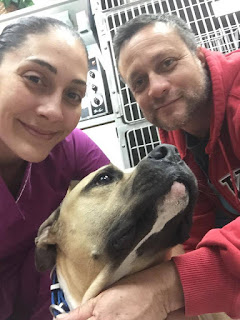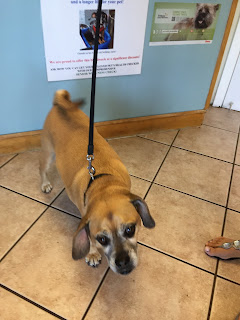April is the American Red Cross’s Pet First Aid Awareness Month! If you've ever thought about a home first aid kit for your pets, now is the time to make it happen. Here are some of the items you should have in your pet’s first aid kit.
Numbers and directions to the nearest emergency clinic
Let’s start with the most obvious. First aid is never meant to be a cure. Once your pet is stable, he will need to be seen by a veterinarian. Include written directions as well as a map. While this may seem redundant, it is difficult to think straight under extreme stress. Make it as easy for yourself as you possibly can. Include the information for your pet’s regular veterinarian so that pet sitters or other family members will know what to do in your absence. Most general practitioners will see emergencies during regular business hours, so depending on when your emergency occurs, you may not need to go to an emergency facility. If you have time, and can do so safely, call the facility and let them know you are en route. Briefly state the nature of the problem and your pet’s approximate weight. If time is of the essence, just go. It’s our job to handle emergencies.
Number for the Pet Poison Hotline
If you suspect your pet has ingested a toxin, and he is not in need of immediate assistance, or if you are unsure whether or not a compound is toxic, call the Pet Poison Hotline at 855-764-7661. They are open 24 hours, seven days per week. While the call is toll free, at the time of this writing, there is a $39 fee per incident.
Hydrogen Peroxide
Hydrogen peroxide is useful for the induction of vomiting. Never use it on wounds as it kills normal cells in addition to bacteria. This can impede healing and result in scarring. Do not induce vomiting without first contacting your veterinarian or an emergency facility. Some toxins cause as much damage on the way up as they do on the way down, so only do this if the professionals advise you to do so.
Turkey Baster or Syringe Without a Needle
See “induction of vomiting” above.
Basket Muzzle
Even the most well-trained dog may bite when frightened or in pain. A basket muzzle will protect you from a bite while still allowing your pet to pant, drink water or vomit.
Tweezers
These are useful for removing thorns, stingers, and ticks.
Antiseptic Wash or Wipes
Chlorhexidine or Betadine are inexpensive and can be purchased just about anywhere.
Sterile Eye Wash
Blunt-Tipped Bandage Scissors
Gauze Bandaging
Band-Aids
Never use these on your pet’s skin as they will be painful to remove. Band-aids are useful for keeping gauze bandaging in place.
Rectal Thermometer
Make sure you know ahead of time what your pet’s normal body temperature range should be. It will always be higher than a human’s, so don’t be alarmed by high numbers or “fever” warnings if you are using a product designed for human babies.
KY Jelly
See “rectal thermometer” above.
Karo Syrup
This is a must for small dogs, as they are prone to hypoglycemia.
Styptic Powder
Use this to stop bleeding in torn toenails. For bleeding wounds, QuickClot, available at most pharmacies, can literally be a lifesaver.
Latex Gloves
Towels
Handling Devices
Depending on what type of pet you have, include leashes, carriers, or pillowcases and towels for frightened kitties. You don’t want to run around looking for these when time is of the essence.
A Sturdy Box
Package your supplies, mark the box clearly, decide where it will go and DON’T MOVE IT.
While this list is by no means exhaustive, it’s enough to start a family conversation regarding emergency procedures for your pets.













